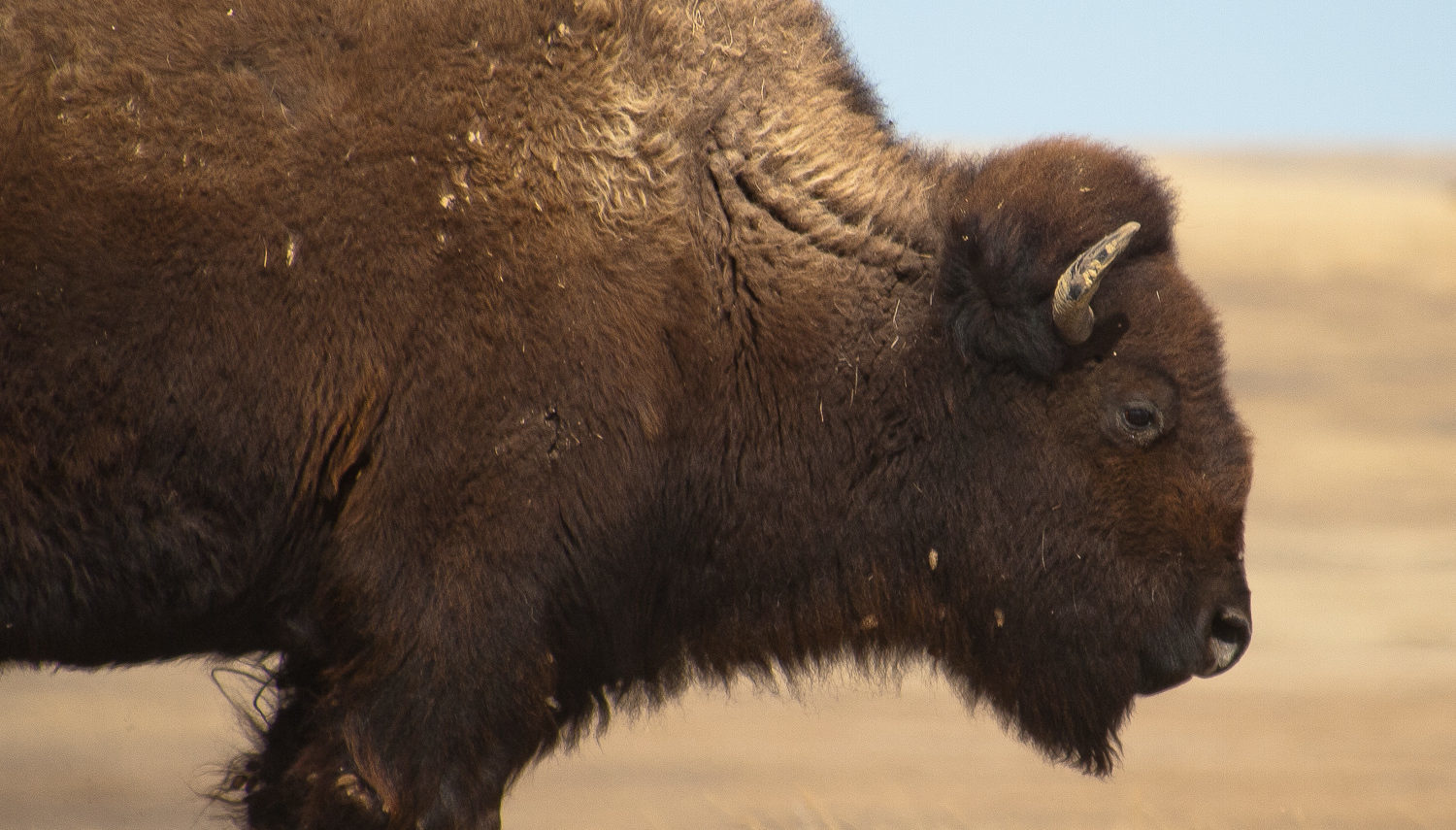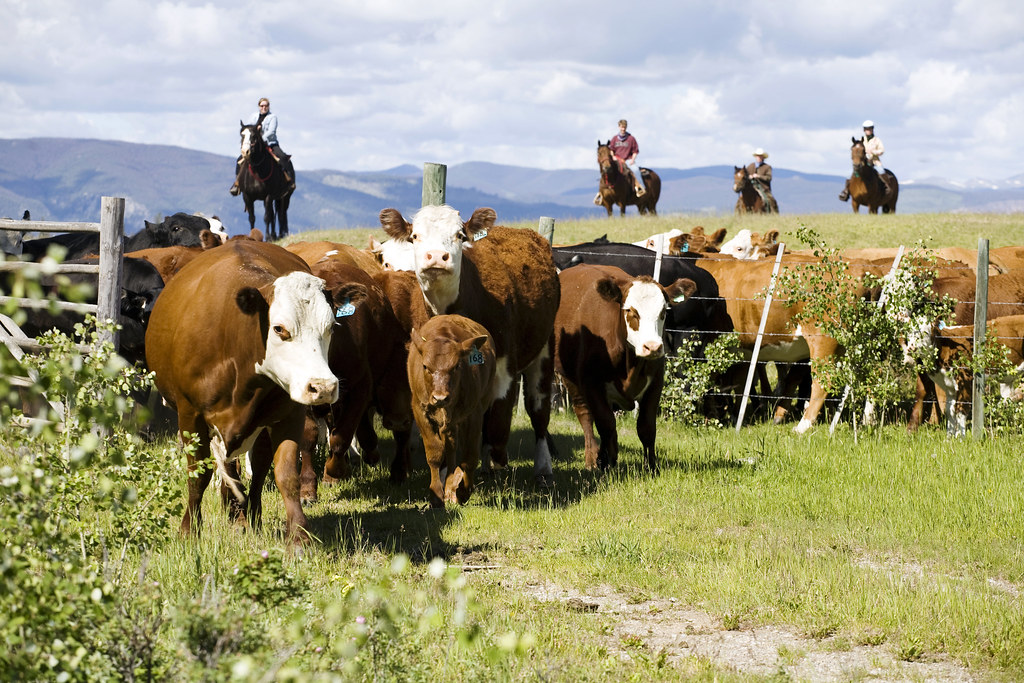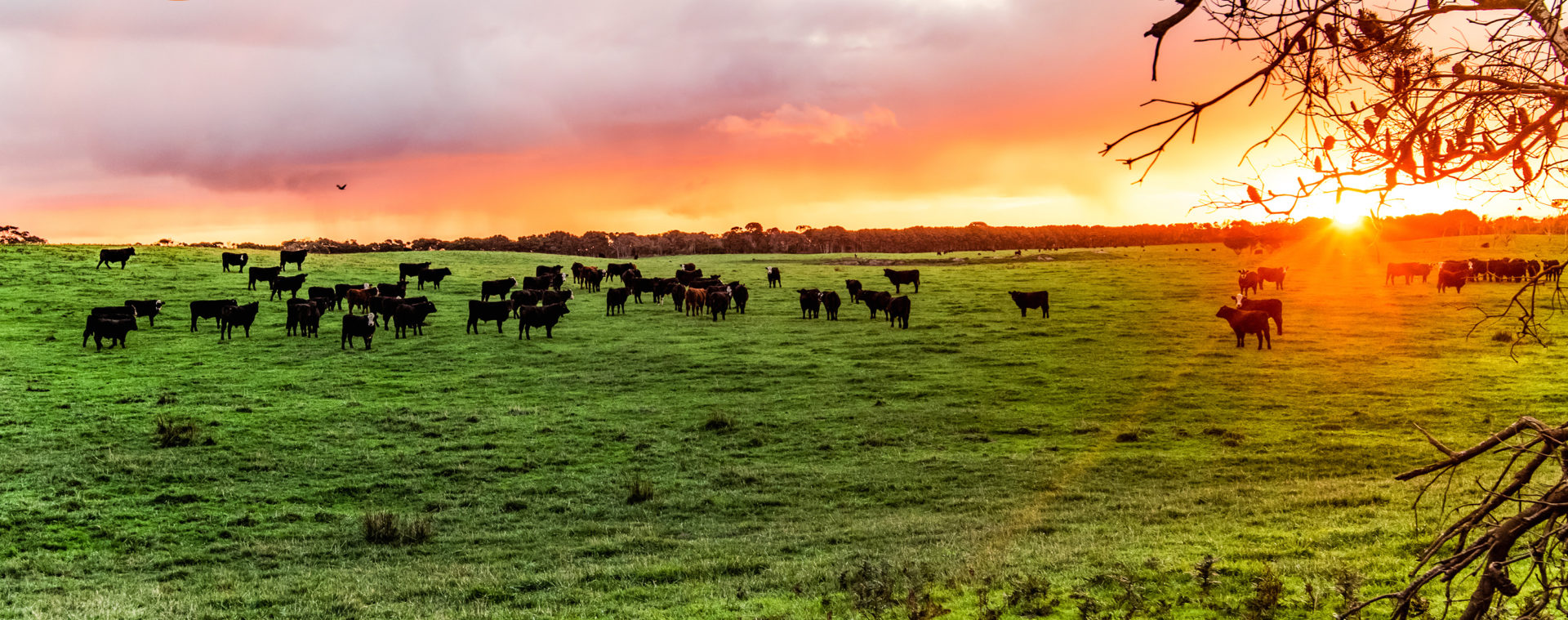
Crowd Cow
In 2015, an innovative, entrepreneurial startup called Crowd Cow pledged to build a piece of local food infrastructure that had long remained elusive: a tool that would allow small family farmers and ranchers to deliver meat directly to the kitchens of eager eaters. From its headquarters in Seattle, the company created a web-based platform for customers to order high-quality, local beef online and have it delivered to their front doors. Just as Amazon had once changed the face of bookselling, hopes were high that a meat-selling revolution was coming.
The idea was to provide the intimacy of the farmers’ market at a far larger scale, a digitally enabled breakthrough that would make life easier for conscientious carnivores, while making ranchers’ work more streamlined and profitable. But in the intervening four years, initial enthusiasm has turned to disappointment for many farmers and ranchers who have realized that a web-based meat delivery service may not be the marketing panacea they initially envisioned. Though Crowd Cow has built a growing customer base and raised millions in venture capital, a number of current and former suppliers say it has proven to be a fiasco for many of the small producers and processors who looked to it with high expectations.
Lack of understanding of the vagaries of the meat business, coupled with a reluctance to communicate openly, and a certain amount of hubris on the part of the company and its employees have led to financial losses and strained relationships for small producers across the country. So while Crowd Cow entered the business with such apparent potential, for some producers, it’s been a series of broken promises and failed expectations.
Cow tipping
Small livestock producers, especially those who raise their animals only on grass and pasture, face two imperfect paths for getting meat to market. Both options come with benefits and drawbacks.
First, they can sell live animals into the commodity system, which allows producers to receive a price up-front and get back to farming, without needing to worry about marketing or customers. But while the ability to sell live animals is appealing, commodity prices are often too low in an American market dominated by four large processors—JBS, Tyson, Cargill, and National Beef. Many times the price is so low, producers can’t break even, a fact especially true for ranchers who use husbandry practices that matter to some customers—raising 100 percent grass-fed cattle, for instance—and who are unlikely to earn a premium for their extra efforts.
The other option is to find a small, independent plant that practices “custom” slaughter, which gives ranchers beef back in carcass form, or parceled into cuts. That way, producers are likely to get a better price, pound for pound. But it requires marketing directly to consumers, chefs, and other end users, a process that can be more challenging, more expensive, and riskier than the industry-based alternative.
Many were excited at the prospect that Crowd Cow would offer them a viable third choice: a new method that would allow ranchers to sell whole carcasses—a true nose-to-tail scheme—and outsource their marketing and consumer outreach to a third party, while still receiving a higher price than what commodity markets will pay.
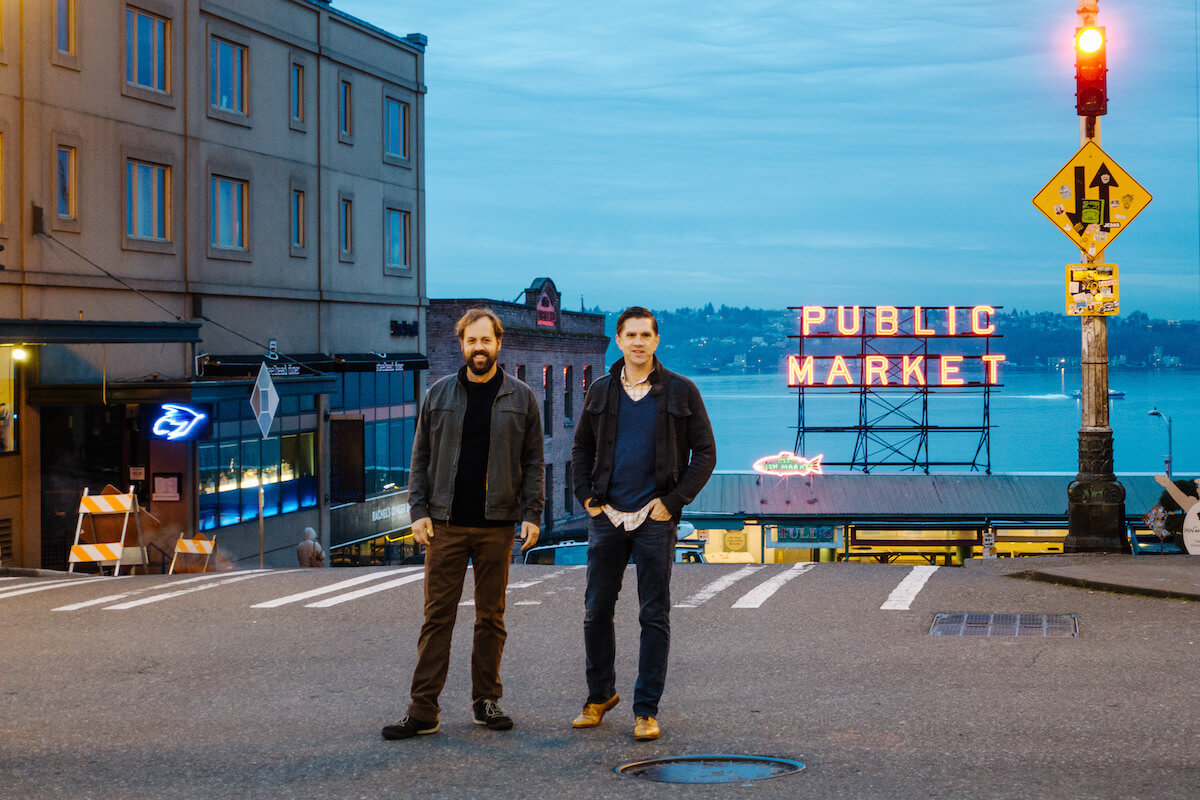
Crowd Cow founders Ethan Lowry, left, and Joe Heitzeberg wanted to create a company that combined the direct-to-producer intimacy of the farmers’ market with the convenience of commodity meat
Crowd Cow
The company was born when Ethan Lowry and Joe Heitzeberg, two Seattle tech entrepreneurs, tried to buy a whole cow, an idea that came from friends who had purchased beef directly from a local farm. Quickly, they learned that what they wanted was not a cow, but a steer—the pair, according to an oft-told anecdote, were so naïve to the realities of the cattle business that they weren’t familiar with that basic distinction. (In rancher parlance, “steers” are male animals bred for meat, while “cows” are female cattle bred to produce milk or calves.) “Wow, that was so cool,” Heitzeberg says of his friends’ experience, “but really hard, you know?”
The pair decided that crowdsharing a whole animal with a group of 50 people, each committing to buy a small portion of meat, could be a viable alternative. It would allow them to purchase a whole steer from a local farm, but not until the cow (steer) “tipped,” meaning all the shares were sold. They got plenty of verbal interest in the idea and set out to find a farmer who would sell them their first animal.
With no connections in the livestock business, they turned to searching Google. “What we found was that we couldn’t find anything at the time,” says Heitzeberg. “It was still not really a great way to find local farms or much information about them, what their ratings were or their practices or other things we cared about.” They then searched farmers’ markets and butchers, and still found themselves stuck. Finally, they started cold-calling farms in the area. Heitzeberg says they reached lots of voicemail boxes that weren’t set up, and when they did get a live person, their elevator pitch wasn’t always well-received. “Farmers are pretty risk averse,” he tells me. Eventually, they were able to tour two farms, talk with the farmers, and set up the most basic of supply chains. It was only the beginning of an education for the entrepreneurs, but they tipped their first cow within 24 hours of sending the first email to their list.
As Heitzeberg and Lowry began learning about meat and the logistics of buying, processing, and delivering it to consumers, they were also intent on raising venture capital. With initial seed funding of $2 million in 2017, the company has since raised a total of $24.1 million, including the latest round of $15.1 million announced just this month. Investors have included high-profile names like Joe Montana and Ashton Kutcher. The investments have allowed Crowd Cow to expand far beyond its original customer base and first farms in the Pacific Northwest, and the marketing dollars have fueled its rapid growth.
“They didn’t know a damn thing about the cattle business”
Bob Boyce is a 77-year-old grass-fed beef producer and slaughterhouse owner at Lil’ Ponderosa Beef in Carlisle, Pennsylvania. He farms more than 500 acres and runs a herd of 300-plus grass-fed cattle. In early 2017, after hearing about Boyce’s beef from Chef Sean Cavanaugh at J.J. Jeffries, a farm-to-table restaurant in Lancaster, staff from Crowd Cow approached him about joining the company’s expansion on the East Coast. Boyce saw value in the business idea, but also had reservations. “If you’ll pardon my French, they didn’t know a damn thing about the cattle business, the beef business, or the merchandising business, but they did have a good idea that could be beneficial to farmers, if it were executed in a proper manner,” he says.
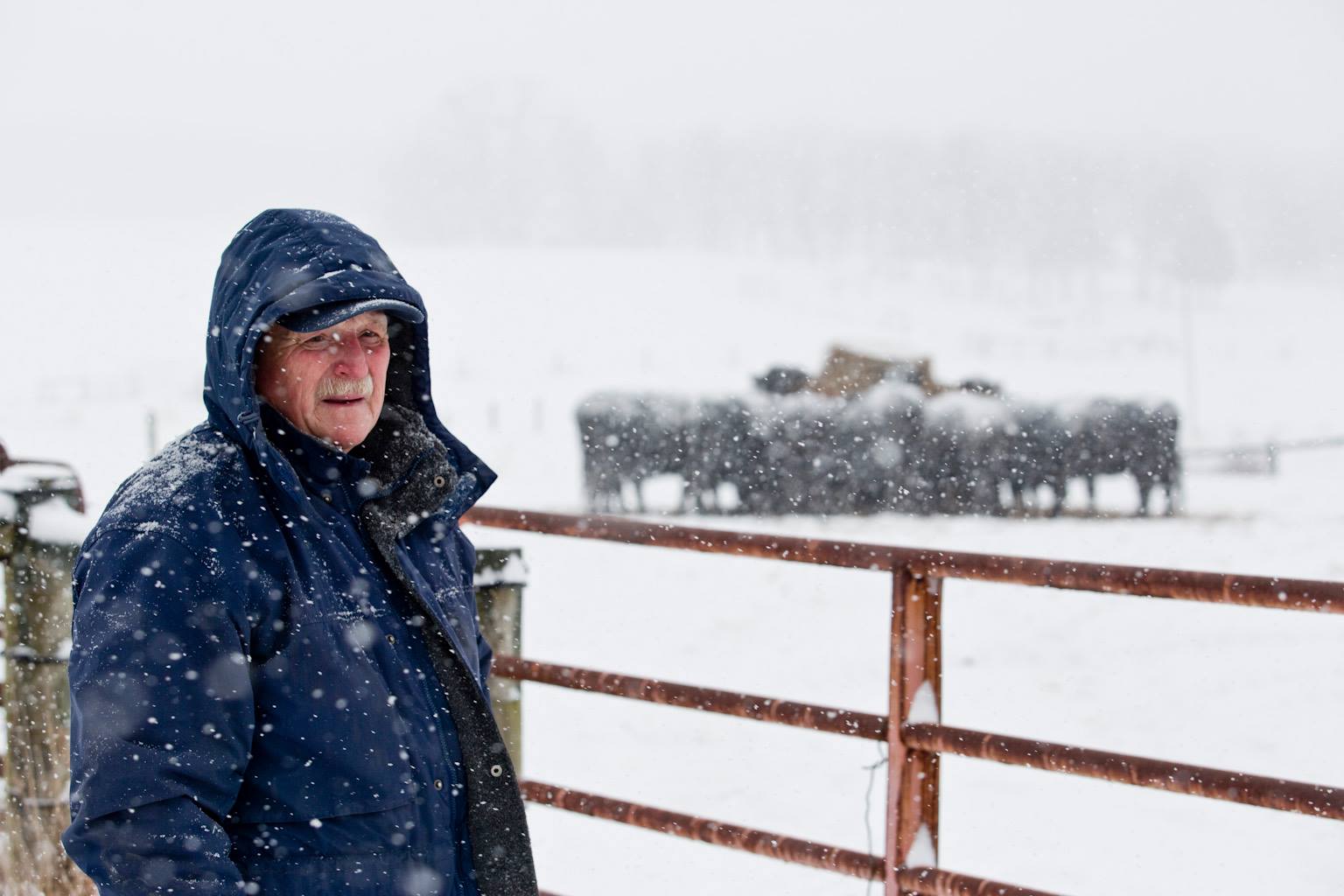
Bob Boyce, owner of Lil’ Ponderosa Beef, says
Lil’ Ponderosa / Facebook
By that time, the cow-tipping model had evolved. “I think it was great when we had just a few hundred customers in Seattle only, which is where we started,” says Heitzeberg, “because you can truly sell the whole animal. The farmer’s happy. People can get all these cuts they can never get at the grocery store. And it’s kind of fun—like, you’re a part owner of an actual cow.” But trying to sell whole animals on a national scale when customers expect overnight shipping and convenience and might not be familiar with cuts like oxtails and tongues proved to be a difficult hurdle to jump. Crowd Cow was still buying whole carcasses, but its customers could order steaks and roasts without waiting for a cow to tip.
Even with some hesitancy about Crowd Cow’s food business acumen, the well-connected Boyce, known to pretty much everyone as Uncle Bob, introduced the Crowd Cow team to other small farmers and processors in the area. Within a few months, Lil’ Ponderosa was slaughtering 32 animals a month for Crowd Cow—eight of the company’s own and the rest from three other farms. Boyce added part-time employees, invested in more equipment, upgraded his plant, and added cattle to his herd.
As is often the case in farm communities, the relationship between Boyce and Crowd Cow was sealed with a handshake. “I felt confident that I could represent their interests, process their meat, and do a good job for them without the benefit of a lawyer being involved,” Boyce says. “So, I never wrote a contract. I never asked for a contract. They never offered a contract. We just started doing business. But while we didn’t have a written contract, we’d established a working relationship that constituted essentially an oral contract.”
Crowd Cow mined the craft meat community for connections and industry knowledge without making long-term investments, producers say.
Considering himself a valued partner, Boyce shared wisdom learned over his 30-plus years in the meat business with Crowd Cow staff. Dwight Gaston, who is no longer with the company, joined Crowd Cow as COO and visited Boyce’s operation. Gaston was a cosmetics and jewelry e-commerce veteran, but had no background in meat.
“He took copious notes,” says Boyce, “and I explained to him that if you’re going to be in the meat business, you better develop a market for your least attractive items first, or you’re going to wind up with a freezer full of them. And that typically is burger.” The message apparently didn’t sink in, because Boyce says he started hearing stories of warehouses full of Crowd Cow ground beef, including his own, being sold below cost or donated. To Boyce, even though he had been paid for the meat up front, it was further evidence that Crowd Cow didn’t understand how the business worked.
Jay Young of Rising Spring Meat Company, another small processor in central Pennsylvania, heard similar tales. “Any trained monkey can sell a rib eye,” he says. “It’s getting rid of all that grind. I had seen their handling facility. I knew who was handling the grinding for them, and he said he was getting backed up. They just seemed very resistant to advice or very resistant to considering an idea that they hadn’t thought of first.”
When I asked Heitzeberg about these stories, he seemed to deny that donations of ground beef are a routine company practice. “We generally don’t donate beef, though we did in one instance last year in connection with a fulfillment center expansion where it made more sense to donate a quantity than to move it into the new location,” he wrote in an email, noting that the farmers still received their payments in that case. He didn’t address the specific occurrences alleged by Boyce and Young, which took place in 2017.
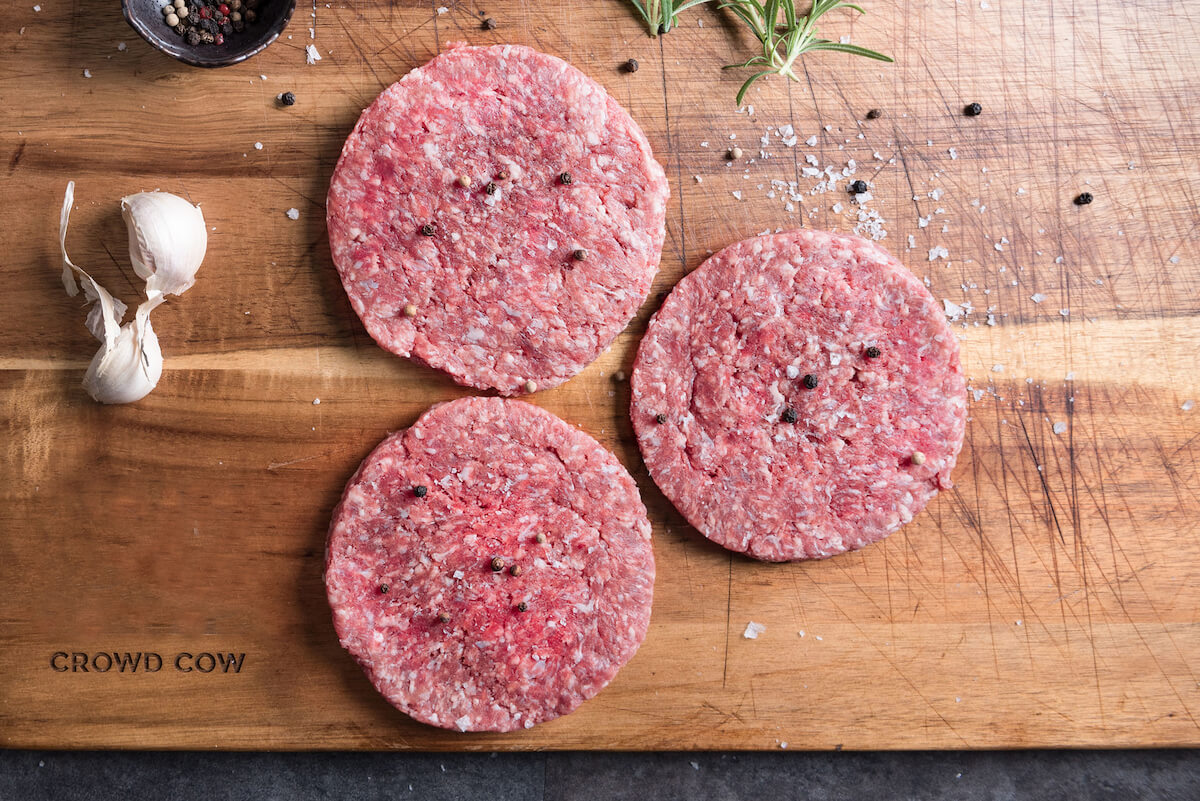
A single steer can yield hundreds of pounds of ground beef. For companies in the whole-animal business, figuring out how to sell all that grind can be a challenge—as Crowd Cow discovered
Crowd Cow
It’s perhaps no surprise this issue created concern among the producers. Ground beef tends to be a sticking point in the whole-animal market. A typical beef carcass yields only about 50 pounds of high-value steaks, another 150 pounds or so of roasts, and more than 200 pounds of grind. If a buyer doesn’t have a market for the ground beef, it ends up frozen and warehoused. Process 10 animals in a week, and you’re sitting on a literal ton of burger. Balancing the carcass, which means selling or using all of the parts, both edible and inedible, is a never-ending challenge for small producers, and one of the reasons the Crowd Cow model was so attractive.
Dan Honig, co-founder of Happy Valley Meat Company in Brooklyn, New York, concurs. “The biggest limiting factor for us and anybody else moving whole animals is ground beef,” he says. As The New Food Economy has previously reported, Happy Valley buys whole animals from small farms in Pennsylvania, has them processed at Rising Spring, and then wholesales the meat to restaurants in the Northeast. The company’s approach is the opposite of Crowd Cow’s. “Our growth is dictated by the speed at which we sell ground beef,” Honig says. “And then our steaks sales follow that, as opposed to the other way around, where our growth is dictated by our steaks.” Happy Valley currently sells steaks to Crowd Cow.
Honig also says the large amounts of investment capital flowing into Crowd Cow’s coffers, while important for growth, can be a distraction from the company’s operations. “I can’t stress this enough,” he says. “It is a very difficult thing—especially when you’re rocketing your growth, like when you raise $8 million, and you’re trying to make that back for your investors—to do that in a balanced way based off just the meat that comes off of an animal.”
Heitzeberg told me in an email that Crowd Cow has figured out several creative ways to deal with its excess grind. “The Seattle Mariners’ T-Mobile stadium featured our beef this year, as did Shake Shack in Seattle, and we also have a partnership with a local grocery delivery company that resells our ground beef,” he wrote. The company also used it as a loss leader to attract new customers, according to Heitzeberg, selling ground beef at a low price as an enticement to subscribe or return.
Long-term commitments, short-term thinking
For the Pennsylvania producers, other warning signs appeared. “As the business continued to grow, we could never get any insight into projections,” says Boyce. “They were never able to tell us how many animals they were going to need the next year. So, I was always a little bit leery. They would give us a three-month [projection], maybe a six-month, but it was a guesstimate.” Because raising a grass-fed calf to slaughter weight is a long-term commitment, usually taking two to three years, long-term forecasting is a way of life in the cattle business.
Beau Ramsburg, another Pennsylvania farmer and processor who did not work with Crowd Cow directly but knows several others who did, summed up the producer viewpoint in an email to me. “There is either a misunderstanding or a willful ignorance among buyers of niche meats about the effort, capital, and time necessary to bring that meat to the marketplace,” he wrote. “It is not as easy as flipping a switch to stop the flow of product that may have taken years to get the finish line, when changes happen to the plans or the business model of the buyer. And because of the higher costs of producing those animals, there are limited marketing avenues available to the producer/processor when the initial buyer has decided to move on from their obligations to those producers.”
That’s how the bottom dropped out for Lil’ Ponderosa, Boyce says: Orders never came for dozens of animals produced under verbal agreement with Crowd Cow, which took years to raise. For Young, who was processing a significant portion of the company’s animals in Pennsylvania, the calls became fewer and farther between, until, he says, he learned that Crowd Cow had moved its processing to another plant, taking some of his long-term clients along.
“They didn’t give us any warning that they were going to stop buying from us,” says Boyce. “And meantime, they’d given us indications that their business was expanding. It wasn’t until August that we found out that they weren’t going to buy any animals in November and December, and it wasn’t until November that they figured out they weren’t going to buy maybe until April. I’m of the opinion that is not the way you conduct business.”
Boyce says he was left with 40 head of cattle that were destined for the Crowd Cow pipeline, in addition to losing thousands of dollars at the slaughter plant. He also says the company wasted his time. “My disdain for Crowd Cow comes from the fact that I expended a lot of my intellectual capital and my time and my resources on introducing them to farms here in the East, and getting them signed up with Crowd Cow to supply beef.” Young at Rising Spring tells a similar story, as do a half-dozen other producers, processors, and consultants in Pennsylvania and in other parts of the country who talked with me off the record. A theme emerged in those conversations: Crowd Cow, these sources say, mined the meat community for connections and industry knowledge without making long-term investments, an approach that came to feel extractive when those relationships went sour.
One of the most difficult situations to arise from the Crowd Cow debacle for the Pennsylvania farmers was the damage to their relationships with each other. Boyce tells me, “It tarnished my reputation to some degree when I was vouching for this outfit, that they were paying us and that they were good people to do business with, because I had no knowledge to the contrary.”
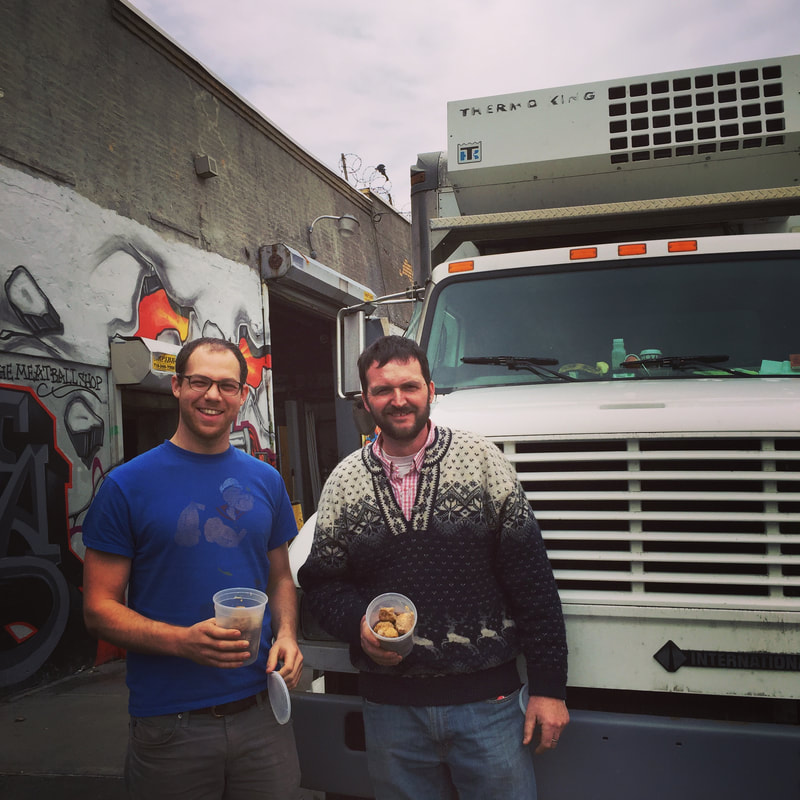
Dan Honig, left, of Happy Valley Meat Company with Jay Young of Rising Spring Meats
Rising Spring Meats
Honig says, “They gave some of the plants some leverage over me based off of the high price they were paying. Especially with Rising Spring, it put a little bit of stress on our relationship because Crowd Cow was paying so much more than we were.” Honig and Young have repaired their relationship and continue to work together, and Honig says he’s happy with his current relationship with Crowd Cow.
Heitzeberg didn’t want to comment on specific farms, but then implied that Boyce and Young suffer from a case of lost customer remorse. “We notified in August that we’d have nothing to buy in November. That’s several months’ notice, not instantaneous,” he says. “I think it’s hard to be told ‘no’ in this world, or it’s hard to lose business; it’s hard to lose a customer. In the case with us, in that period of time, we were buying that stuff and paying full dollar up front for all of it as the customer, and then bringing it in, and then, thank you very much, we’ll go sell it. So those farms lost a great customer who was buying a ton of their product incrementally over what they’d done in the past.”
But why did Crowd Cow suddenly stop ordering from established partners like ‘Lil Ponderosa and Rising Spring in the first place?
“There are thousands of farms out there, tens of thousands of little farms, and we have over a thousand on our waitlist saying, ‘I’d like to sell to Crowd Cow.’” Heitzeberg says. “We don’t have enough demand for a thousand. So, we’re going to be very selective about who we do work with based on quality and taste, their practices, and their story. And then logistics, including the quality and consistency of their supply, the packaging that they deliver to us, and the quality of that packaging, the timeliness of their delivery. And just, in general, how easy or difficult or profitable they are to work with. And so, our answer is to provide alternatives to the feedlot and the farmers’ market, which are two systems that existed before Crowd Cow, and which aren’t sustainable for most farms.”
But twelve weeks’ notice can feel like a blink in the grass-fed cattle business, which operates on the scale of years, not months. And Crowd Cow’s decisions about supplier relationships could feel capricious. As Jay Young puts it: “You’ve got a group of people making decisions on a whim dealing with a group of people who aren’t making decisions on a whim.”
Another unhappy producer told me, “There aren’t enough resources in this industry to have a go-it-alone attitude. It has to be like a rising tide. And there’s just only so much infrastructure. There are only so many producers, and it’s still ag at its core, where reputation matters.”
“Our growth with them has been exponential.”
While Crowd Cow has plenty of detractors among livestock producers and others in the meat business, not everyone is unhappy.
White Oak Pastures is a sizable, multi-generational family farm with more than 150 employees and two slaughter plants in rural South Georgia. According to operations manager Brian Sapp, the farm has been selling to Crowd Cow for about six months, not as a replacement for any of the existing marketing channels, including its own robust e-commerce website, but as an addition. Sapp says White Oak’s experience with Crowd Cow has been positive. “They came to us looking for a larger quantity on a more consistent basis of items they were really selling a lot of, like bacon, pork chops, chicken breasts, that kind of stuff. Our growth with them has been exponential over the last six months,” he says.
“For us, Crowd Cow has been great to work with,” says Greg Gunthorp, owner of Indiana’s Gunthorp Farms, a large family pork and poultry operation that sells mostly to wholesale accounts in the Chicago and Indianapolis areas and sells holiday turkeys to Crowd Cow. “I don’t really know any farms that do all of their marketing through Crowd Cow. For the farms that have been able to make a connection with them, I think it’s a really good addition to their operation. And that’s the way I would explain it for us. We probably would never be able to make a living just selling through Crowd Cow, but adding Crowd Cow on top of what we’re doing now is really good.”
Pivoting to platform
Back in Seattle, Crowd Cow has changed its model once again. In a pivot from the original focus on local meat from small family farms, the company began selling A5 Wagyu beef from Japan in 2017, and has begun offering a subscription box similar to its competitor, ButcherBox, which was also founded in 2015.
A dramatic shift in Crowd Cow’s business model feels like a betrayal of the company’s original mission and professed ethos.
More significantly, last year, Crowd Cow quit purchasing whole animals, or much meat at all. Most, but not all, suppliers are now working under a consignment contract, which current suppliers shared with The New Food Economy.
Here’s how it works: Producers now pay for all of their own processing at a Crowd Cow-approved plant, and additionally front the cost of packaging to Crowd Cow specifications, and shipping to the distribution center. If product doesn’t sell within 90 days, the supplier has the option of having product returned at its own expense or paying a storage fee to Crowd Cow. Crowd Cow will keep a 22 percent fee when products are sold and charge the producer additional fees for payment processing, dry ice, packaging the orders, and logistics. Each vendor still has a webpage on the Crowd Cow site with the company story, so customers are able to feel connected to and order from specific farms.
To some producers I spoke with, this dramatic shift feels like a betrayal of the company’s original mission and professed ethos. Instead of having a purchaser for their whole animals, farm businesses are reduced to using Crowd Cow as a sales and marketing platform for cuts. Balancing the carcass, dealing with less popular cuts and ground beef, now falls on the farmer’s shoulders, as it would for any other sales platform, including a farm’s own direct selling channels, like e-commerce or the farmers’ market.
Though the contract transfers the risk back to the farmers and ranchers, many of whom are naturally concerned about—and unhappy with—the shift, Heitzeberg says it was a necessary move. For a small company like Crowd Cow to buy product up front and assume the responsibility of getting it to market wasn’t a sustainable plan, he says. He also points out that the consignment model may not be for everybody. “Being part of our platform is tremendous value. They [farmers] can do it on their own, but I think they’d be far worse off driving a truck to a farmers’ market and bartering for cash with a hundred people walking around a parking lot,” he says.
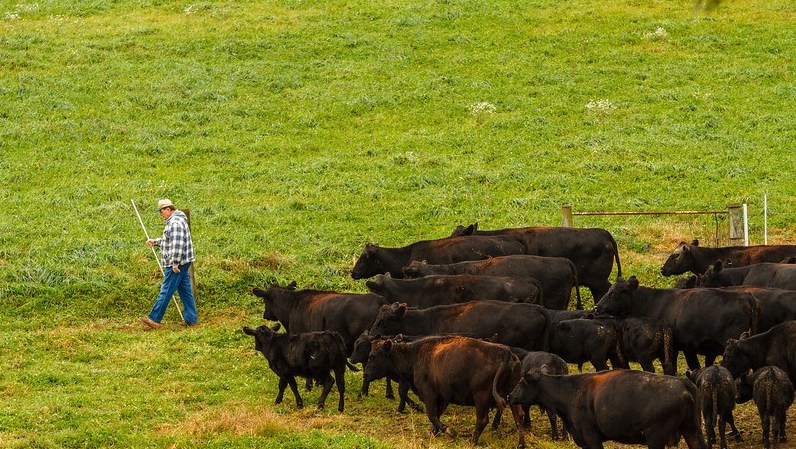
Lil’ Ponderosa’s Bob Boyce feels Crowd Cow didn’t live up to the assurances it made to producers
Lil’ Ponderosa / VIP Photography
Heitzeberg sees the new model as one of shared risk: “It’s a new concept. In switching to the marketplace model, we’re saying, ‘Let’s build this together.’” He believes that producers partnering with Crowd Cow and investing in a new way of working together means “we can win big and we can change the industry.”
But while Crowd Cow began as a next-generation wholesaler, a bulk buyer of meat and a customer ranchers badly needed, producers say it now functions more like gig-economy platforms Grubhub and Airbnb—as in, it takes a big cut of revenue in exchange for providing access to an ostensibly large marketplace of shoppers.
Honig of Happy Valley says he understands the change, but also empathizes with small producers. “Talking purely from a business standpoint, as opposed to the mission of helping small farms,” he says, “for their investors and for their business, it works really well, but it doesn’t do great by the farms.”
Competitor ButcherBox continues to grow its subscription service, and has been a boon for pork producers, even as the company struggles to buy American grass-fed beef and sources most from Australia. As with many disruptive ideas, the second generation of meat delivery systems is now entering the space. Companies like Moink, Grass Roots Farmers’ Cooperative, and Porter Road are run by people with a background in meat, farmers and butchers who understand the supply side of the business. It’s unclear whether or not they’ll be able to compete with Crowd Cow’s cash, marketing savvy, and first-mover advantage.
Meanwhile, the farmers and processors of Pennsylvania, even though they lost plenty of money, and their reputations among their peers took a hit, aren’t bitter about their experience with Crowd Cow. One of them told me, “One thing that we have learned is the importance of keeping laser focus on our own goals and core strengths, even if it means saying no to business.” Any of them would welcome working with a new company that shares that philosophy.

